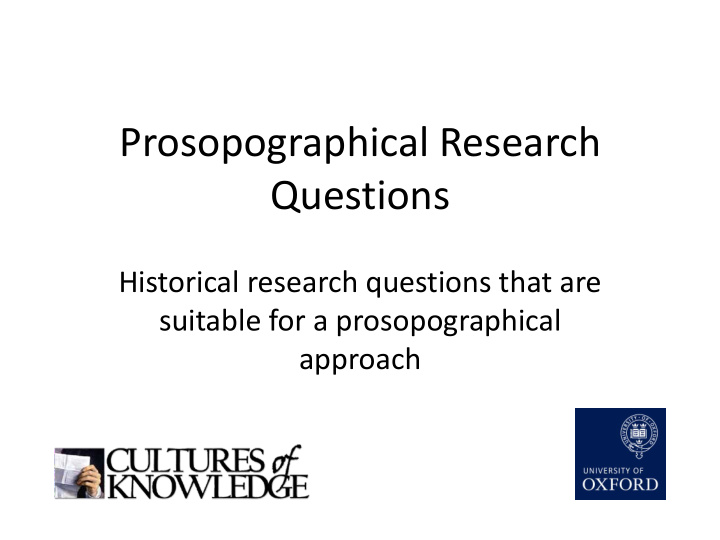



Prosopographical Research Questions Historical research questions that are suitable for a prosopographical approach
What is prosopography? • Lawrence Stone: “Prosopography is the investigation of the common background characteristics of a group of actors in history by means of a collective study of their lives.” • ≠ Social network analysis
Sort of information captured • Person-centred • External features of people: gender, age, family relationships, ethnic background, religious denomination, social class, personal relationships, education, occupations, political faction
Hartlib’s circle Samuel Hartlib (c.1600-1662) (Correspondence) network: • > 4,250 letters with ±325 correspondents in EMLO • Another > 400 people mentioned in letters • Widely dispersed • Highly mobile • Little-known figures
Research questions focus on: • Geographical origin • Family relationships • Contact history • Location history and institutions attended • Educational and occupational history
Example research questions • Who belonged to Hartlib’s circle and how did it originate? • Did the composition of the network substantially change or did it only increase over time? • Was Hartlib instrumental in the formation of subgroups? • What role did his contacts have in the growth of the network? • Were there pre-existing networks which Hartlib’s wholly absorbed? • To what extent did all members of a subgroup have contact with Hartlib or did certain individuals act as contact person?
• To what extent was Hartlib’s circle centred on him? • To what extent was it interconnected? • To what extent did it consist of subgroups?
Example research questions (continued) • What can we say about the ethnical, religious, social, or occupational background of the members of Hartlib’s circle? • Can we speak of a fairly homogeneous group? • Did the nature of the composition of the network change over time? • How do people who, e.g., were only active in it for a short period of time fit the profile of the other members?
Categories of research questions 1) Ethnic, religious, and socio-economic background of members of social group 2) Origin, composition, and structure of network, and how networks intersect 3) Contextualization of specific individuals and subgroups within larger group
Recommend
More recommend